
Building fluency with addition facts is a critical building block in our students’ mathematical understanding. We know that the more time we give them to become truly fluent, the stronger the mathematician they will become.
But what does it mean to be fluent? Fluency involves three components: accuracy, efficiency, and flexibility. Notice that I never mentioned speed or rote memorization (even though students will come to answers more quickly as they build flexible and efficient strategies).
So how do we help build fluency? Well, like I said, we have to give students lots of opportunities to experience addition and subtraction so they can begin to develop their own strategies, and then give them time to practice! I’ve got a list of fun center activities that will do just that. Ready? Let’s dive in.
Addition within Ten
In addition to making ten, students must quickly recall addition facts within ten. Enter: Fact family activities.
Domino Addition
When I taught first grade, fact families were a big part of our math scope and sequence. We would create fact family books. And, I used a range of fact family activities during math centers. It is hard to pick a favorite. But here’s one tried and true: Domino Addition.
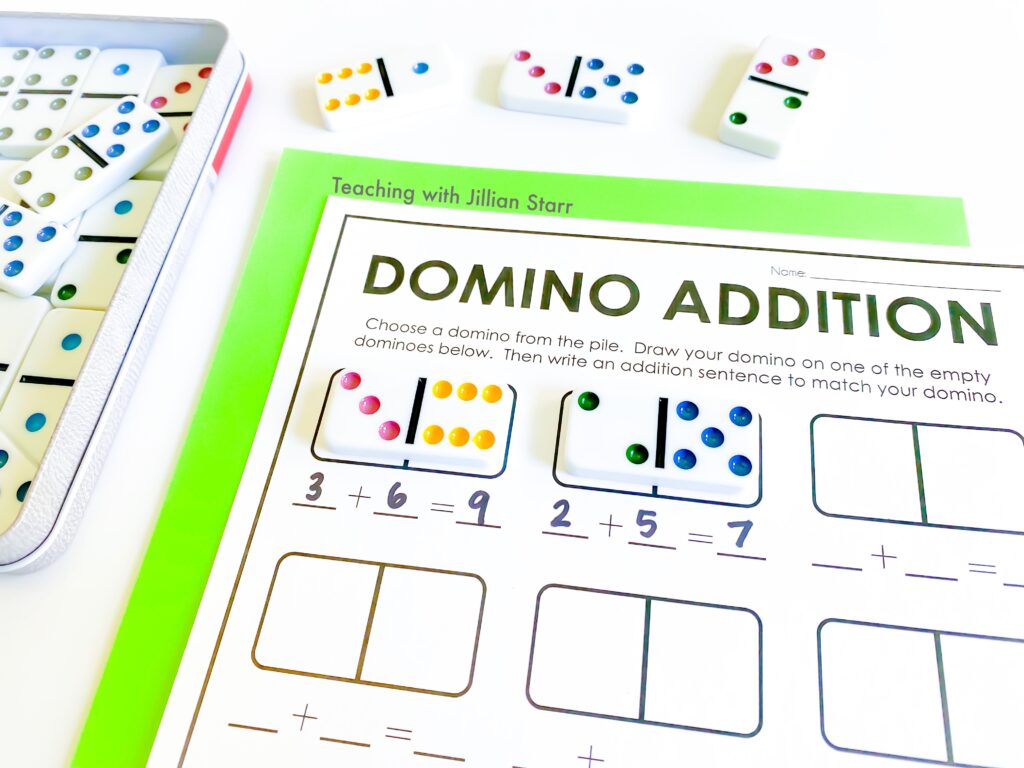
Domino Addition is a simple activity that combines hands-on manipulatives (dominos) and practice writing number sentences within 10.
The directions are simple. Students choose a domino from a pile. Then, they draw the domino into the empty domino template. Finally, they write the number sentence to match the domino.
Addition Facts Logic Puzzles within 10
Are your students ready for a challenge? It is time for addiction facts logic puzzles.

Logic puzzles or logic tiles are perfect for partner or independent center work. Logic puzzles and logic tiles (I used both) include 10 number sentences with ten missing digits (0-9). There is only one correct way to solve a logic puzzle. And, in order to solve it, students will need to recall their addition facts with ease.
These are a great way to level up fast finishers. Students practice recall of their addition facts while also strengthening their problem-solving skills.
Using Ten As A Benchmark
When we think forward in our students’ learning trajectory, we can see that addition, subtraction, place value, and missing addends are ALL supported by fluency within ten. If students do not have a solid fluency foundation within ten, they will hit a wall as they progress into multi-digit numbers and more complex mental math.
But, then what? It’s time to build on making ten by using those addition facts in numbers that go beyond 10.
Make a Ten To Add
Let’s take this awesome activity, Bridges to Ten, for a spin. Literally.
Bridges to Ten is a printable activity that takes seconds to prep and provides templates to help students organize their process of adding two single-digit numbers to form a sum over ten.
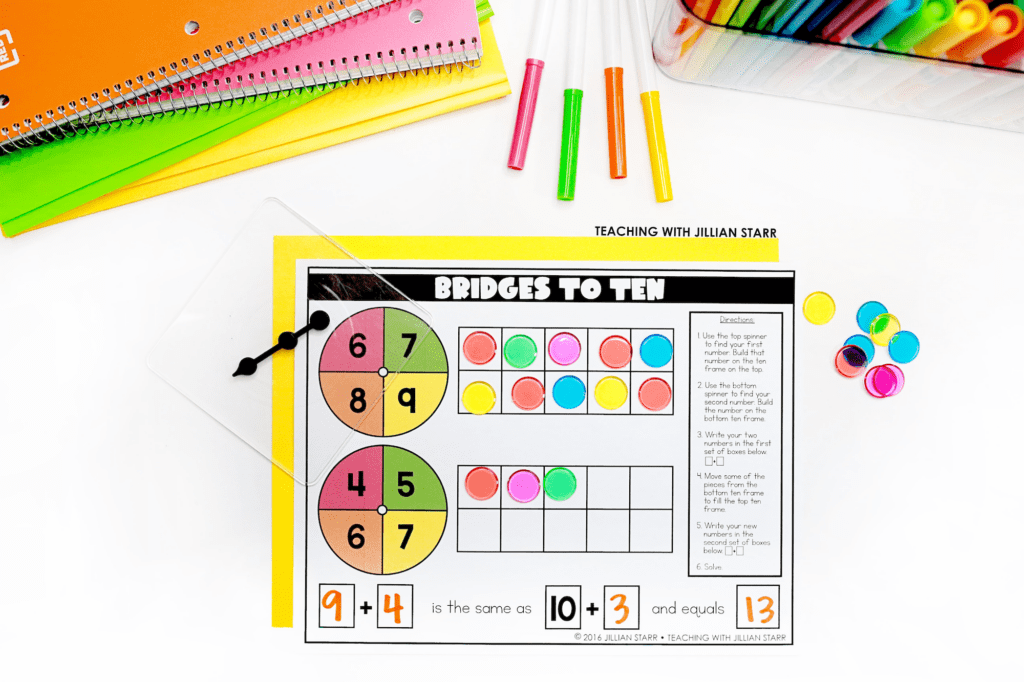
In Bridges to Ten, students will use two different spinners to find their addends and build those numbers into the corresponding tens frames.
- First the student will spin each spinner.
- Next, they will write their two numbers in the first set of boxes.
- After, they use counters to build both numbers on the ten-frames to the right.
- Then, students will move counters from the bottom ten-frame to the top ten-frame until the top ten-frame is full.
- Students will now have a “friendlier” addition problem to work with, using the benchmark of ten. They write the number of remaining counters on the second ten-frame below and record the total.
5 In A Row – Make a Ten to Add
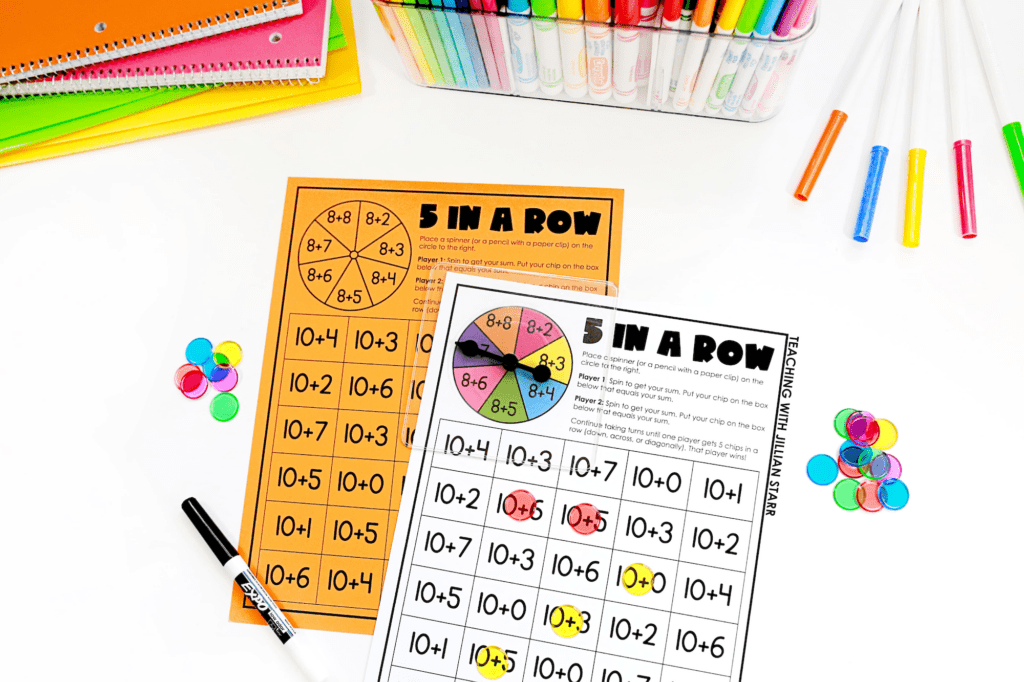
5 in a Row is another great activity to practice using ten as a benchmark when adding. 5 in a Row is also a printable activity with spinners—this time with a gameboard. Here’s how to play!
- Player One starts by spinning the spinner to select an expression (the version above uses 8 and another addend)
- The student identifies the equivalent expression that uses the benchmark of ten (e.g. 8 + 5 is equivalent to 10 + 3)
- Next, they mark that expression on the board with their color and say the total.
- They lose the turn if they cannot find an open space.
- The first student to get 5 spaces in a row (horizontally, vertically, or diagonally) wins!
Bonds to Make Bridges
Looking for one more step in this progression? Bonds to Make Bridges is a Bridges to Ten activity with a twist.

Bonds to Make Bridges combines Bridges to Ten with number bonds. Students follow similar instructions as Bridges to Ten. However, there is one added step. Students break the first added into parts. One of those parts needs to help make ten on their ten-frame.
2-Digit Addition Centers
One of the most challenging transitions is moving from 1-digit to 2-digit addition with regrouping. Strong addition facts support this transition. However, sometimes, students need activities that make the connection more concrete. While there are many 2-digit addition with regrouping activities that I’d love to share, here are two quick and easy centers.
2-Digit Addition Puzzles

Visuals are a great way to make addition facts (as building blocks) for 2-digit addition with regrouping more obvious to students. Addition puzzles showcase a single number sentence in four different visuals. Each piece of the puzzle shows one strategy for finding the sum.
- Number lines
- Hundred Chart
- Decomposing
- Base Ten Rods & Cubes
Construction Zone Addition
Construction Zone Addition is one of my favorite, more advanced addition activities.
- It uses a double-ten frame model (visuals help with regrouping!)
- There is an embedded visual reminder of how to regroup ones into tens
- There is space for students to keep track of multiple sets of tens and ones
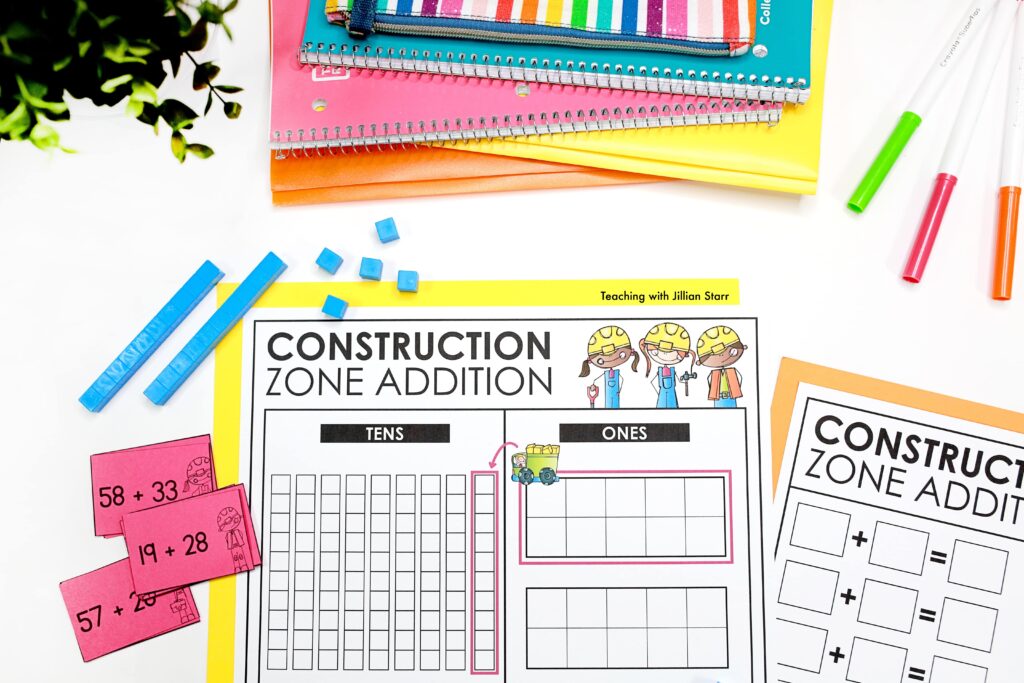
Here’s how to play:
- Students flip over one card to get their addition problem (there are differentiated sets included).
- They build the first addend with base-ten blocks. Tens are placed on the left of the printable board. Ones go in the ten-frames on the right.
- Next, they build the second number (in the same order).
- If students have ten or more ones in the ten-frame, it’s time to regroup! They exchange their ten ones for a ten-rod and place it on the left side of the board. They leave the remaining ones.
- Then, students determine the total value of the base-ten blocks to find the sum.
- Finally, students record their work on the recording page.
Fun warning: Students LOVE pretending to be builders. And, in addition to all that fun, students are guided on a hands-on journey to finding the sum of multi-digit numbers. Even better, students can play as they progress. There is a version for:
- Teen + 1-digit
- Teen + teen
- 2-Digit + 1-digit
- 2-digit + 2-digit
It is not always easy to find quality addition center activities that support students’ addiction facts fluency while building toward more complex number problems. I hope this taste of some of them is helpful! And I hope you can now see how supporting the development of addition facts doesn’t have to be mundane or difficult!
Do you have any favorite activities to practice addition facts? Let me know in the comments! I’d love to hear them!

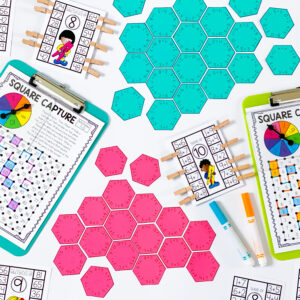

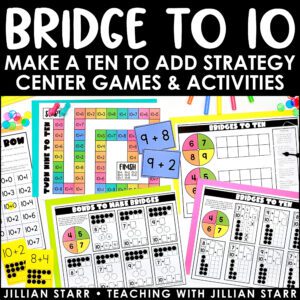

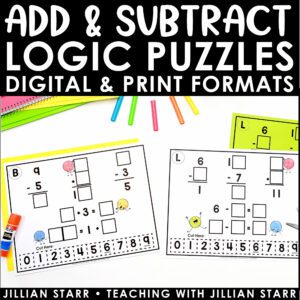
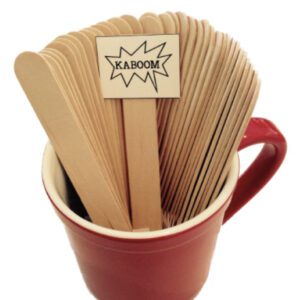
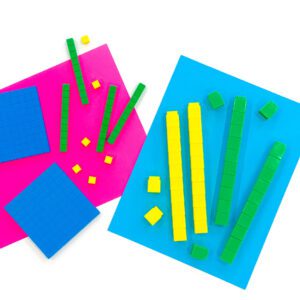
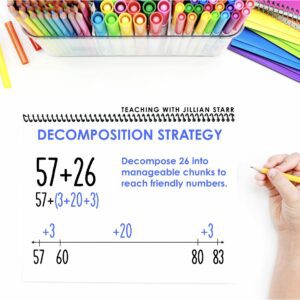


Leave a Comment